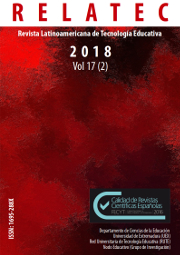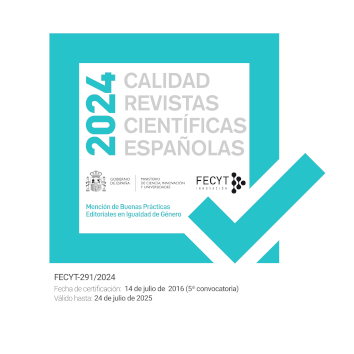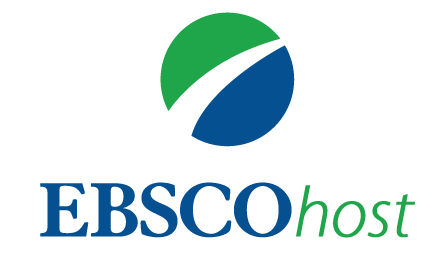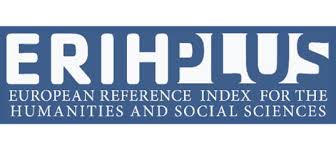Assessment of the usability of a Learning Analytics resource dedicated to promoting Self-Regulated Learning in Flipped Classroom
DOI:
https://doi.org/10.17398/1695-288X.17.2.9Keywords:
Education, Educational Technology, Feedback, Learning Strategies, Learner AutonomyAbstract
The adoption of the Flipped Classroom methodology is a new trend in the field of education, with a growing number of publications showing significant impacts on student behavior and performance. This methodology encourages the student to study the curricular content before attending the classroom, whereas the classroom becomes a place for active learning that focuses on discussions, questions and practical activities. In the Flipped Classroom, the student's performance is dependent, mainly, on activities outside the classroom conducted at a distance. These activities require a more active posture of the student in the management of their studies and, because of this requirement, research on Flipped Classroom points to the need to develop approaches that promote Self-Regulated Learning. In this sense, this study aimed to evaluate the usability of a Learning Analytics resource dedicated to Self-Regulation Learning in Flipped Classroom. The adopted method contemplated the convergence of multiple sources of evidence, with the triangulation of data collected through the SUS questionnaire and observation. According to the opinion of thirty-nine users who collaborated with the research, even with some suggestions for improvement, the usability of the evaluated resource is satisfactory and, in addition, the artifact stimulates the reflection of the student, offering information that favors the self-regulating processes in the Flipped Classroom.
Downloads
References
Bangor, A., Kortum, P., y Miller, J. (2009). Determining what individual SUS scores mean: Adding an adjective rating scale. Journal of usability studies, 4(3), 114-123. http://dl.acm.org/citation.cfm?id=2835587.2835589
Brooke, J. (1996). SUS-A quick and dirty usability scale. Usability evaluation in industry, 189(194), 4-7.
Capes. (2010). Fomento à inovação para o desenvolvimento e aplicação de Tecnologias de Informação e Comunicação em Educação. Recuperado a partir de http://www.capes.gov.br/images/stories/download/editais/resultados/RESULTADO_FINAL_EDITAL_15_DED_CAPES_25.05.2010.pdf
Capes. (2015). Fomento à inovação para o desenvolvimento e aplicação de Tecnologias de Informação e Comunicação em Educação. Recuperado a partir de http://www.capes.gov.br/images/stories/download/editais/resultados/100552016-resultado-032015-UAB-final.pdf
Corrin, L., y de Barba, P. (2015). How do students interpret feedback delivered via dashboards?. In Proceedings of the 5nd international conference on Learning Analytics and Knowledge (pp. 430-431). ACM. https://dl.acm.org/citation.cfm?id=2723662
Davis, D., Chen, G., Jivet, I., Hauff, C., y Houben, G. J. (2016). Encouraging Metacognition & Self-Regulation in MOOCs through Increased Learner Feedback. In Proceedings of the 6nd international conference on Learning Analytics and Knowledge (pp. 17-22).
DeLozier, S. J., y Rhodes, M. G. (2017). Flipped classrooms: a review of key ideas and recommendations for practice. Educational Psychology Review, 29(1), 141-151. https://doi.org/10.1007/s10648-015-9356-9
Durall, E., y Gros, B. (2014). Learning Analytics as a Metacognitive Tool. In CSEDU (1) (pp. 380-384). https://doi.org/10.5220/0004933203800384
Felder, R. M., y Silverman, L. K. (1988). Learning and teaching styles in engineering education. Engineering education, 78(7), 674-681.
Fidalgo-Blanco, A., Martinez-Nuñez, M., Borrás-Gene, O., y Sanchez-Medina, J. J. (2017). Micro flip teaching‒An innovative model to promote the active involvement of students. Computers in Human Behavior, 72, 713-723. https://doi.org/10.1016/j.chb.2016.07.060
Flick, U. (2009). Introdução à pesquisa qualitativa-3. Artmed editora.
Freeman, S., Eddy, S. L., McDonough, M., Smith, M. K., Okoroafor, N., Jordt, H., y Wenderoth, M. P. (2014). Active learning increases student performance in science, engineering, and mathematics. Proceedings of the National Academy of Sciences, 111(23), 8410-8415. https://doi.org/10.1073/pnas.1319030111
Karaoğlan, F. G., Olpak, Y. Z., y Yılmaz, R. (2018). The Effect of the Metacognitive Support via Pedagogical Agent on Self-Regulation Skills. Journal of Educational Computing Research, 56(2), 159-180.
Lage, M. J., Platt, G. J., y Treglia, M. (2000). Inverting the classroom: A gateway to creating an inclusive learning environment. The Journal of Economic Education, 31(1), 30-43. https://doi.org/10.1080/00220480009596759
Mason, G. S., Shuman, T. R., y Cook, K. E. (2013). Comparing the effectiveness of an inverted classroom to a traditional classroom in an upper-division engineering course. IEEE Transactions on Education, 56(4), 430-435. https://doi.org/10.1109/TE.2013.2249066
Mazur, E. (1997). Peer instruction: getting students to think in class, In: AIP Conference Proceedings. AIP, p. 981-988.
Mazur, E. (2013) “The Flipped Classroom Will Redefine the Role of Educators”. Recuperado a partir de http://evolllution.com/revenuestreams/distance_online_learning/audio-flipped-classroom-redefine-role-educators-10-years
O'Flaherty, J., y Phillips, C. (2015). The use of flipped classrooms in higher education: A scoping review. The internet and higher education, 25, 85-95. https://doi.org/10.1016/j.iheduc.2015.02.002
Preece, J., Rogers, Y., y Sharp, H. (2005). Design de interação. Bookman.
Rodrigues, R., Silva, J., Ramos, J. L. C., de Souza, F. D. F., y Gomes, A. S. (2016). Uma Abordagem de Regressão Múltipla para Validação de Variáveis de Autorregulação da Aprendizagem em Ambientes de LMS. In Brazilian Symposium on Computers in Education (Simpósio Brasileiro de Informática na Educação-SBIE) (Vol. 27, No. 1, p. 916). http://dx.doi.org/10.5753/cbie.sbie.2016.916
Siemens, G., y Baker, R. S. (2012). Learning analytics and educational data mining: towards communication and collaboration. In Proceedings of the 2nd international conference on Learning Analytics and Knowledge (pp. 252-254). ACM. http://dx.doi.org/10.1145/2330601.2330661
Sun, Z., Lu, L., y Xie, K. (2016). The Effects of Self-Regulated Learning on Students’ Performance Trajectory in the Flipped Math Classroom. Singapore: International Society of the Learning Sciences.
Tabuenca, B., Kalz, M., Drachsler, H., y Specht, M. (2015). Time will tell: The role of mobile learning analytics in self-regulated learning. Computers & Education, 89, 53-74. https://doi.org/10.1016/j.compedu.2015.08.004
Tori, R. (2009). Cursos híbridos ou blended learning. Litto F, Formiga M. Educação a distância: o estado da arte, 1, 121-128.
Valente, J. A. (2014). Blended learning e as mudanças no ensino superior: a proposta da sala de aula invertida. Educar em Revista, 79-97. http://dx.doi.org/10.1590/0104-4060.38645
Verbert, K., Duval, E., Klerkx, J., Govaerts, S., y Santos, J. L. (2013). Learning analytics dashboard applications. American Behavioral Scientist, 57(10), 1500-1509. https://doi.org/10.1177/0002764213479363
Watkins, J., y Mazur, E. (2010). Just-in-time teaching and peer instruction. Just in Time Teaching: Across the disciplines, and across the academy, 39-62.
Zimmerman, B. J. (2000). Attaining self-regulation: A social cognitive perspective. In Handbook of self-regulation (pp. 13-39).
Downloads
Published
Issue
Section
License
Authors who publish in this journal accept the following conditions:
1. The Author retains copyright in the article. Upon acceptance of the article, the author shall grant to the Publisher the right of first publication of the article. with the dcoument registered with the Creative Commons Attribution-NonCommercial-NoDerivative 4.0 International (CC BY-NC-ND) license, which allows to third parties to use what is published whenever they mention the authorship of the work and the first publication in this journal.
2. Authors can make other independent and additional contractual agreements for the non-exclusive distribution of the article published in this journal (eg, include it in an institutional repository or publish it in a book) provided they clearly indicate that the work was published for the first time in this journal.
3. Authors are allowed and recommended to publish their work on the Internet (for example on institutional or personal pages) before and during the review and publication process, as it can lead to productive exchanges and a greater and faster diffusion of published work (see The Effect of Open Access).









